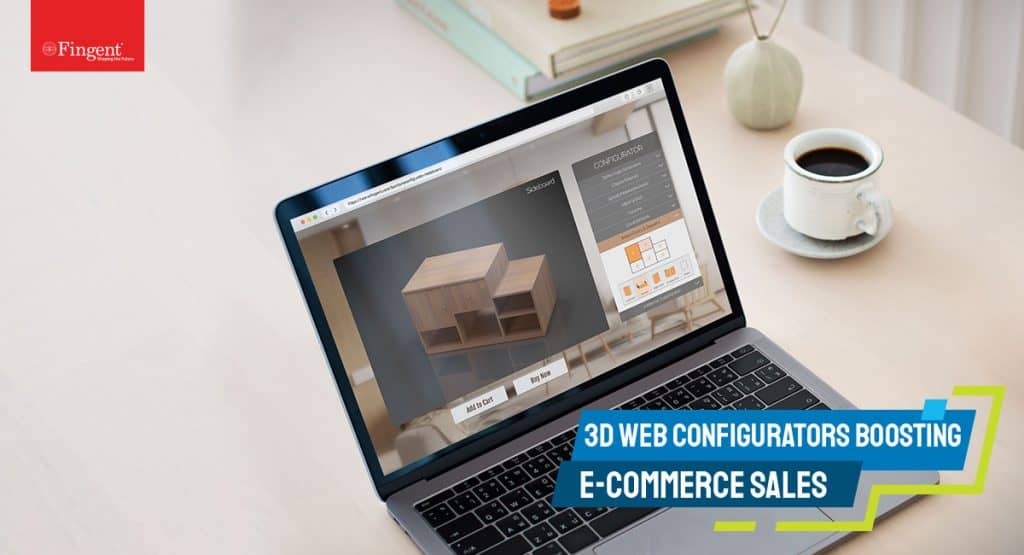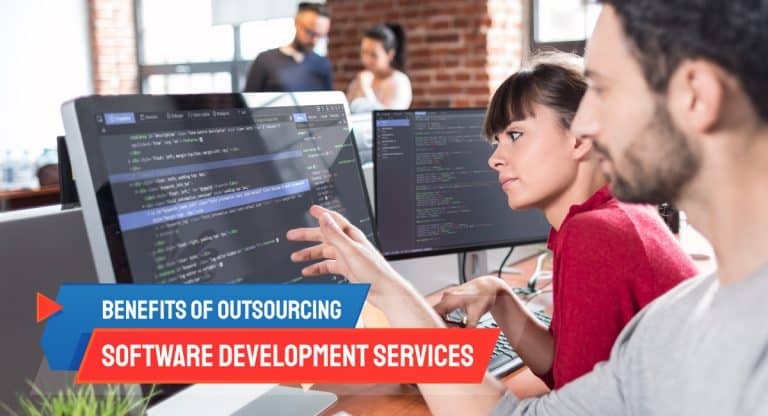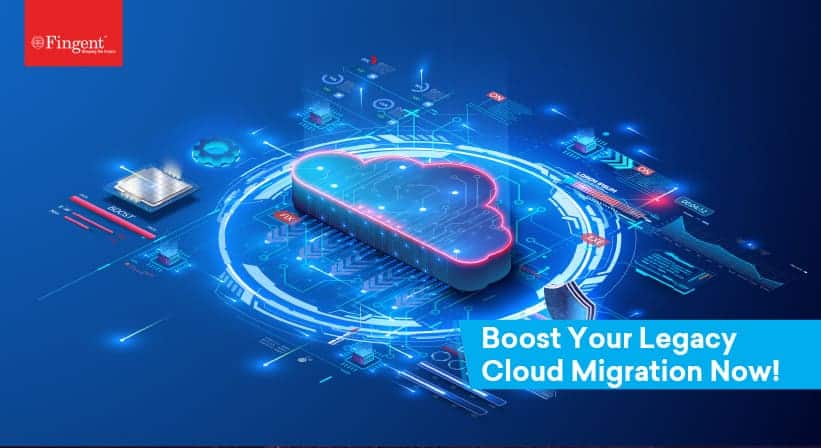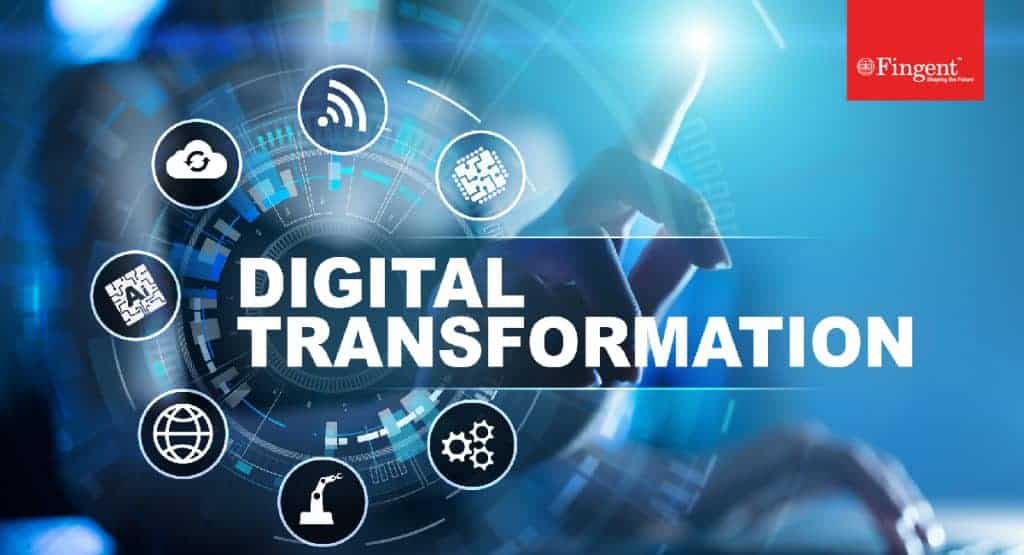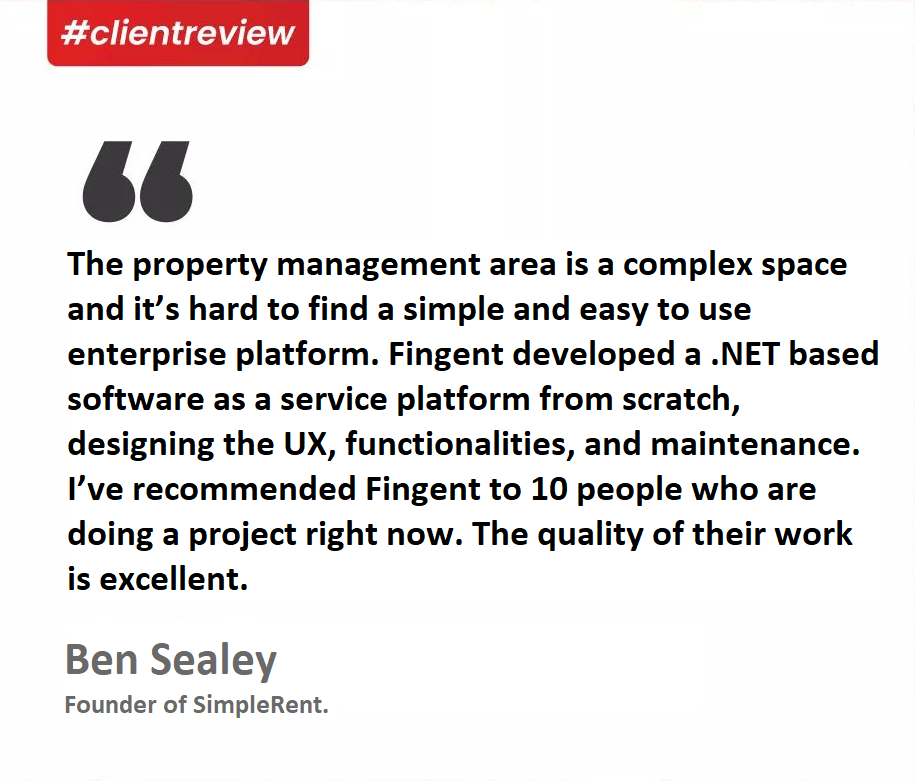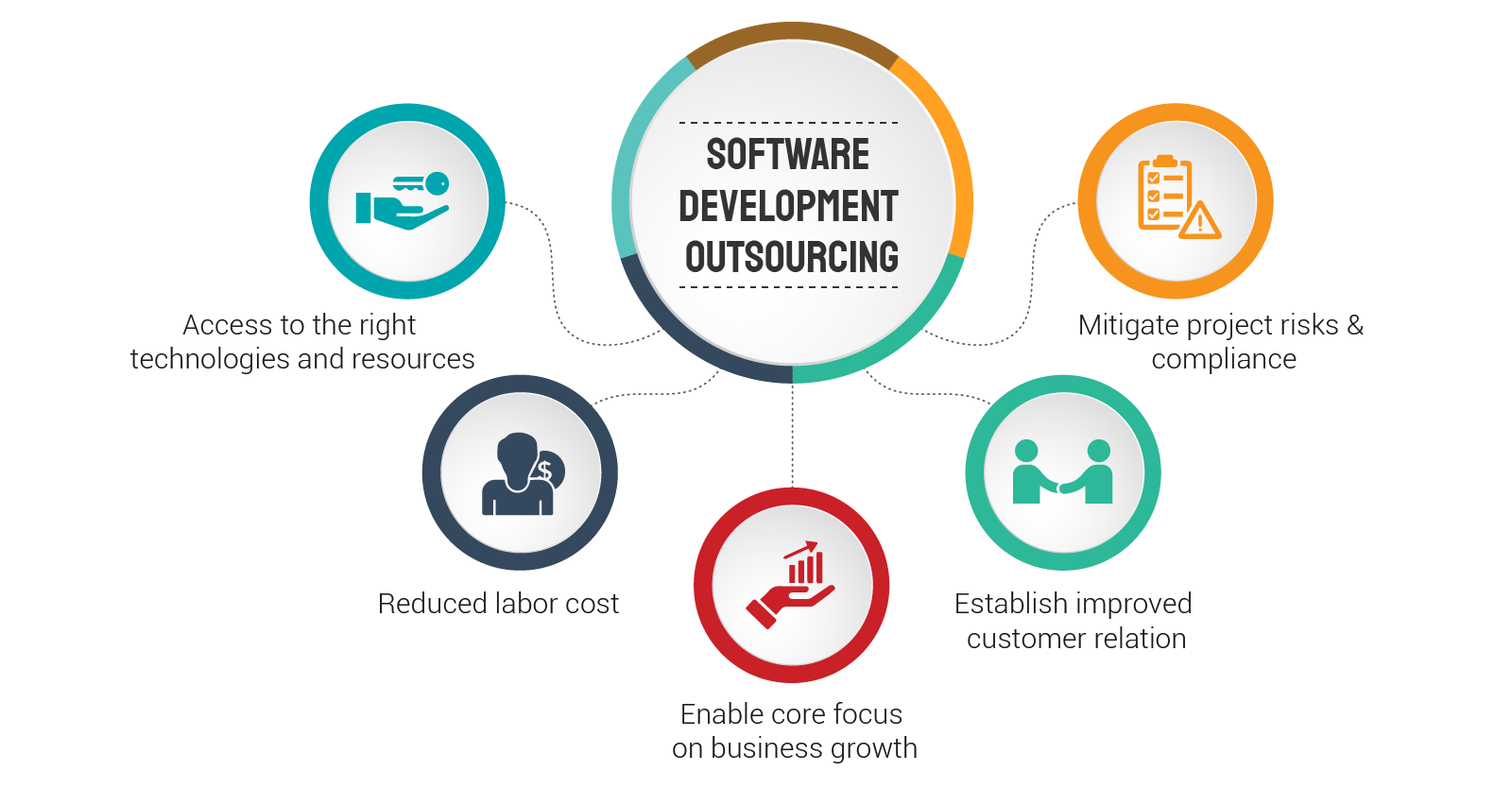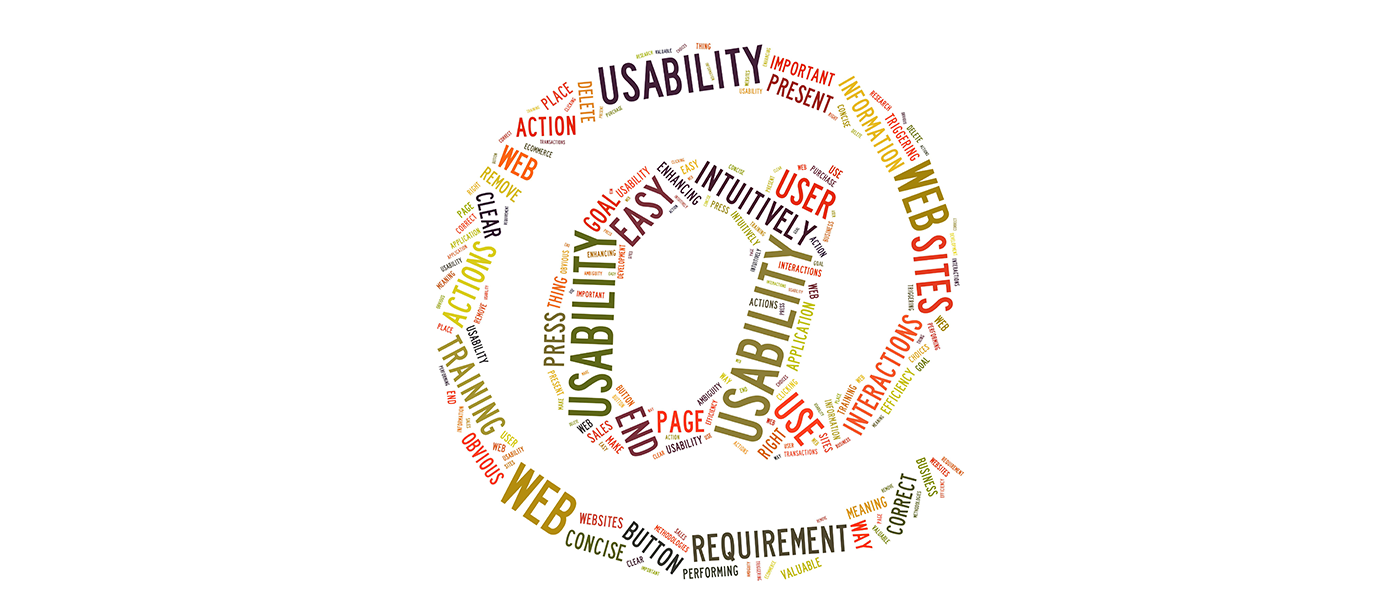Tag: business software development
Planning a software development project for your business? Here’s a detailed guide on the various stages and life-cycle of Software Product Development!
- Introduction
- What Is Software Product Development?
- How To Gauge When Your Business Needs Software Product Development?
- How To Prepare For Software Product Development
- 5 Essential Stages Of Software Product Development
- Tips To Select The Right Partners For Software Product Development
- Healthier, Better Business With Software Product Development
Introduction
Behind all the conveniences that we use in our everyday life, there is complex software. Such ease of life is possible when complex software is implemented in various stages in definitive order. These models address the diverse circumstances of product owners and development vendors.
However, such a rich choice can be confusing. To fully benefit from the development process and successfully communicate with the development team, you must realize your needs and expectations from the product.
Here is a complete guide to help you understand and organize the complex process of Software Product Development – what each stage means and how you can drive a successful Software Product Development project.
What Is Software Product Development?
Software Product Development is a combination of steps, tools, methodologies, and management techniques that bring the concept of a product from the ideation stage to implementation and eventually to the market.
The primary goal of Software Product Development is to provide high-level products within the set budget and timeline. Typically, the software development lifecycle includes product discovery, software development, testing, deployment, and so on.
Read more: Types of Application Software: A Detailed Guide for 2021
How To Gauge When Your Business Needs Software Product Development?
Every business in today’s fast-paced and volatile world needs Software Products. Software Products help your business gain momentum and a competitive advantage for your business. Here are some scenarios that indicate when your business needs Software Product Development.
1. When your company starts experiencing low efficiency and miscommunication-related issues.
Are your current methods of collecting data complicating the effective management of your company? Have you noticed miscommunication between your employees and managers resulting in missed deadlines? If these are restricting your business from reaching its potential growth, you need software development.
2. When your supply chain has many bottlenecks
A dissatisfied customer will quickly hop over to your competition. Bottlenecks created by miscommunication lead to loss of opportunities. When your company is dealing with a higher volume of complaints and low satisfaction rates, you need software development. It can optimize your supply chain management and guide all your decisions.
3. When your business is growing
Despite exponential business growth, the quality of your products and services should continue to be of the highest standard. Product development can help you comply with government regulations, evaluate the quality of the suppliers and the quality of your product.
4. When your customer base increases
When your customers increase, data increases. And that data has to be organized and maintained to help you make better understand your finances and use it to make strategic decisions. Product development can provide you visibility into all transactions contributing to the financial health of your company.
5. When your company is expanding to other locations
When your organization expands to other locations, you will need a fully visible information system that records all that happens at that exact location. Software Product Development equips you with the possibility to record all inventory movements in real-time.
Read more: Progressive Web Apps: New Cutting-Edge Trend in Web Development
How To Prepare For Software Product Development
All Software Product Development needs detailed documentation. This documentation must cover the business requirements and clarify product functionality. It can also serve as the basis to discuss essential issues between business owners and developers. Here is how you can prepare to start a successful Software Product Development:
- Do your homework: Even before searching for a vendor for Software Product Development, you need to conduct marketing research. Qualified marketing research will help you achieve your sales growth now and in the future.
- Develop precise product vision: Work out the “whys” in projects that are focused on the main product. You can eliminate mistakes by answering questions such as, “who is the product for?” and “why do they need the product?”
- Plan: Have a clear vision and communicate that vision to the development team. This will help them to create a software product that is aligned with your requirements.
- Timely execution: Have a written communication with designers and engineers to nudge them in the right direction. This will contribute to well-articulated timely execution.
- Make team members accountable: From day one, help your team members see their share of tasks that contribute to the development of the software product.
- Document everything: Keeping a record of everything from ideation to execution can help your team to access all the features that must be included in the product and the functions each of those features must perform.
Read more: Web Application Development: A Detailed Guide for 2021
5 Essential Stages Of Software Product Development
Stage 1: Product Discovery
The first stage in the Software Product Development lifecycle is where new ideas or concepts originate. A team is organized to study the idea, perform market analysis, and identify technical and market risks. This will help organizations to determine the need for Software Product Development.
Stage 2: Product definition
In this stage, the team creates the first comprehensive evaluation of the technology. Developers and managers evaluate the important points of differentiation of the new product. This will avoid misinterpretation of the needs of the market.
Stage 3: Product development
This is the most time-consuming stage. Software developers use the design document to write code for the components. The task is divided between team members according to their area of expertise. This includes front-end developers, database administrators, and software developers.
Stage 4: Product testing
Quality assurance team steps in this stage to ensure the software meets all the requirements for which it was built. It involves functional testing, performance testing, unit testing, security testing, and usability testing.
During this stage, software developers fix any bugs and retest as many times as required. This stage continues until the software is free of bugs and measures up to the potential capability.
Stage 5: Product deployment
Now, the software is sent into the market for user acceptance testing. Once again, the software team fixes any bugs based on the feedback from its first users. Then the final version is launched into the market. This stage also includes maintenance and strengthening of the software.
Perhaps now you feel you are ready to start Software Product Development. But, hold on! Selecting the right partner for Software Product Development will impact your company in the long term. So, read on to find a few tips that can help you define the right partner.
Read more: Software Development Outsourcing Guide for CEOs
Tips To Select The Right Partners For Software Product Development
Selecting the right partners is an important decision that should not be treated lightly. So, here are few tips:
1. Conduct a background check on the company
To validate the company’s experience and professional trajectory, contact some organizations that have worked with the vendor. This will help you know their experience and the final outcome of the product.
2. Check their ability
For your product to be of excellent quality, the vendor should have abilities and excellence in software development. To guarantee their excellence, find out if they have QAG (Quality Assurance Group) or GMO (Organizational Improvement Group).
3. Knowledge of different methodologies
Solid methodological training and experience in using various technologies are vital for product development.
4. Ability to support throughout the cycle
Ensure that the vendor does not abandon the project at any of the stages.
5. Ability to understand your business
All in the team should be able to understand your unique business requirements and help you find the best solution aligned with your objectives.
6. Capable testers
Ensure the vendor in consideration has qualified testers who can guide you on how to perform your own tests.
Healthier, Better Business With Software Product Development
It may be time for you to start thinking about Software Product Development that helps you run a healthier business. True, it requires an investment of time and money. However, in the long run, you will realize that you have saved time and money by enhancing customer satisfaction and improving employee retention. We at fingent, top custom software development company ensure a streamlined product development process that simplifies both deployment and transition. Call us to see how you can get this started for you right away.
Stay up to date on what's new

Featured Blogs
Stay up to date on
what's new



Talk To Our Experts
Revolutionizing Home Improvement Business With 3D Web Configurator Technology
COVID-19 pandemic’s impact has ushered in a dramatic shift in the behavior and preference of customers. However, this shift was not restricted to customers alone. Social distancing and isolation protocols put industries like home improvement in a state of dilemma, as their business depends highly on showcasing products to customers in a physical space, preferably in-store. Almost overnight, businesses like interior designs and home decor had to adapt and adjust how they presented their products. Today, home improvement companies are increasingly relying on 3D web configuration technology to ensure that their customers gain personalized product experiences and can shop from the comfort of their quarantined couches.
Forbes reports that by replacing static 2D images with interactive 3D models, businesses have gained a 40% increase in online conversion rates and a 30% improvement in average sales prices. Moreover, they also managed to reduce online returns by 80%.
As a customer begins experiencing the ease, personalization, and speed of online shopping, there is no going back. Businesses can leverage this cemented habit when they use a 3D web configurator. In the world of e-commerce, 3D web configurators are already a breakthrough. Unquestionably, it is the need of the hour!
Like e-commerce, the home improvement industry is also a crucial beneficiary of 3D web configuration. This article discusses how the home improvement industry uses 3D web configurators to enhance customer engagement and accelerate business growth.
How the Home Improvement Industry is Utilizing 3D Web Configuration
According to Statista, the projected total home improvement sales in the United States will touch 510 billion USD by 2024. Such an exponential increase is only made possible by the power of 3D web configurators. From sofas to paints and bathroom essentials like faucets and sinks, there are various configurations available today.
3D visualization software can help customers project a 3D model of the product against the background of any room. This does not mean a customer must invest in special equipment. Instead, they can view using their phone camera.
For instance, if a customer wants to see how a beige wardrobe would appear in their bedroom, they can simply point the phone camera and project that wardrobe onto the background. Plus, a 3D configurator allows customers to customize the product before they click on the “purchase” tab. So it is no surprise that 3D visualization software can build your customer’s confidence in their purchase.
Read more: What are 3D Web Configurators? How do they Boost E-Commerce Sales and Drive Customer Satisfaction?
3 Ways 3D Visualization Helps the Home Improvement Industry Thrive
3D visualization gives your customers an overall impression of their living room. It can provide an in-depth view of both real and surreal aspects. In other words, it will help you increase professional accuracy as you incorporate your customer’s requirements.
Here are the three advantages that 3D visualization can bring to the home improvement industry:
1. Color Match
Most people tend to research products online before buying. Besides, homeowners prefer to select their wall color from the comfort of their homes. An excellent 3D configurator case that can influence a consumer to move from the consideration stage to the purchase stage is Dulux. Using 3D visualization helped them to provide a better user experience across various channels and devices. In addition, it benefits both the customer and the consultant as they can pick and choose from all available colors.
The primary goal of 3D configuration is to help customers visualize how they can decorate their homes using various combinations. It generates accurate visualization of the selected paint on the walls and ceilings. Plus, it allows a shopper to import, tweak, process, view, and save the final visualization. This is an excellent feature for tradespeople and DIY renovation enthusiasts as they spruce up their homes.
2. Engaging Visualization
Home improvement businesses can use 3D configurators to educate customers about their products. It enables them to blur the lines between the consideration stage and point-of-sale decision-making. For example, 3D web configuration technology will let shoppers measure what size of furniture would look best in their living room. Once they decide on the size, the configurator could narrow it down to other furniture features and help customers make purchase decisions.
A 3D web configurator can do more than sell a product. It enables a business to be transparent and open about its products in detail. This assures the potential customer and increases decision-making comfort whether they commit to buying or not.
When customers cannot visit a store in person, they may want to inspect the purchase in detail. Having 4k zoom on your product page allows your visitors to scrutinize your products, feel the texture, and choose the right shade of color. This can be made easy when you add 360-degree images. Interactive 3D models can significantly improve your web session duration.
Typical case: Timothy Oulton
Timothy Oulton is a British handcrafted leather furniture brand. From 360-degree views to detail shots, it uses various 3D configuration features to create an engaging product page experience.
3. Interactive Imagery
With more people shopping online, having a 3D interactive website has become increasingly important. It can give your shoppers a degree of interactive imagery that photographs cannot render. You can achieve this by combining the background and the product to create an in-context image. Those combinations will help you convey a certain quality, tone, or mood that will influence a shopper’s perception of your product.
True, you can have multi-angled images, but you cannot rotate them. However, 3D product rendering enables immersive interaction between the customer and your product. Now, a shopper can rotate, enlarge, or shrink the product to view it from all directions. Such context enables shoppers to visualize how your product looks in a real-life setting.
Typical case: Neptune
A British interior design and lifestyle brand, Neptune, designs and creates furniture, lighting, and accessories for the entire home. They use context images to tell a story. Their product pages are filled with high-quality room scenes that highlight the beauty of their products.
Tangible Results of Implementing 3D Web Configurators
3D rendering is a distinctive way to present your home improvement products to your customers. It is less expensive in part because it can be used throughout the process of design and sale. Plus, it nudges them along in their buying decisions.
3D web configurators can help increase your customer engagement, boost online sales, and reduce returns. Thus, more businesses are likely to embrace the power of 3D configuration to ensure business continuity during the pandemic and beyond. So, yes, product visualization is the new reality of the future. But, are you ready for it? If your answer is yes, get in touch with us software development experts and help us give you a 3D view of your business’s success!
Stay up to date on what's new

Featured Blogs
Stay up to date on
what's new



Talk To Our Experts
Stay up to date on what's new

Featured Blogs
Stay up to date on
what's new



Talk To Our Experts
A Complete Guide to Understanding Offshore Software Development
- What is offshore development?
- What is the difference between onshore, nearshore, and offshore?
- What makes offshoring software development so popular?
- How does offshore development work?
- What are the advantages of offshoring software development?
- What are the disadvantages of offshoring software development
- What are the latest trends in offshore software development?
- How to choose the right offshore software company?
- Best practices to follow while offshoring software development
- Final thoughts
What is offshore development?
Offshore development simply is synonymous with outsourcing. It means you’re sending your software development to be done remotely by people who are located in different geography. Though ‘offshoring’ is perceived as risky in ROI, many software companies are considering offshoring software development as it can actually help a lot. Often, the main reason for outsourcing is the lack of human resources required for software development or lack of needed qualification level.
From simple coding to custom development, mobile application development, software support and maintenance, and website design and development, you can outsource tasks to a third-party offshore software development company.
Offshoring development will spare you from the challenge of hiring and training new staff and at the same time ensure you get the best quality software delivered to you in a short time. Offshore application development is used by many of the world’s largest and most famous corporations, so there is no question about its effectiveness.
Read more: Why Software Development Outsourcing is a Smart Move Now
In 2019, the global IT outsourcing market was valued at USD 333.7 bn which is only expected to grow further in the coming years. The inevitability of digital transformation is motivating organizations worldwide to offshore their software development needs. Offshore development companies thus become an extremely important part of the global economy.
What is the difference between onshore, nearshore, and offshore?
Onshore: Onshore outsourcing is when you decide to hire software developers within your country. Most companies find this option convenient and approachable.
Nearshore: Nearshore outsourcing is when you decide to outsource to developers from countries with a similar time zone. Typically, customers count on geographic proximity and cultural similarities.
Offshore: Here, the company of the service provider is located in a different country from yours. It can even be in a different continent with a notable time zone difference.
What makes offshoring software development so popular?
The main reason for its popularity is financial profitability. With offshoring, it is possible to minimize staff expenses within the customer’s organization as well as cut expenses such as rent of premises, equipment, social security, and deployment of development. In many of the developed countries, hiring and paying skilled in-house developers have a significant impact on the budget.
Some of the popular offshore countries in the world include India, China, Russia, Ukraine, Poland, Taiwan, Vietnam, S.Korea, etc.
On average, you can expect your offshore software development vendor to approximately charge the following rates per person per hour of work;
- Asia and Africa: $18-$40
- Eastern Europe: $25-$50
- Central America and South America: $30-$50
- North America: $95-$170
Depending on the requirements, engagement, and pricing models, the above charges may vary. To find out the actual outsourcing rates, you need to directly communicate with the vendor.
Read more: Selecting the Right Engagement Model for Business Software Development
How does offshore development work?
When you consider teaming up with a software development company located in a different country, you can:
- Delegate the project to an individual developer or an offshore development company
- Delegate only certain parts of the software or the whole project to the remote team
- Hire a dedicated offshore development team
If you hire a dedicated team or an individual, you will have complete control and ownership over the development progress which ensures that your remote workers are in touch with one another. This may not be a great idea unless you are a product management enthusiast.
If you turn to the services of a development agency, you won’t have to worry about finding the right resource to manage the working processes. Most of the issues such as what if a team member falls sick or quits will be taken care of by the company instead.
What are the advantages of offshoring software development?
1. Shared responsibilities and competent skills
Offshore development centers are more likely to share and manage the risks during projects, as they depend on the end-result as well. Also, deadlines facilitate a faster process.
2. No training or administration needed
Outsourcing companies need to stay competitive, hence they will have the requisite expertise. So, you need not worry about training the resources. Additionally, operational and administration costs will be negligible as you will not have to take care of office space, equipment, recruiting, etc. All these will be handled by the offshore software development company.
3. Faster time-to-market
Offshoring development ensures that your product reaches the market faster and on time. When qualified people work round the clock to develop your product, you can rest assured that you’ll be getting quality software at the end. Additionally, an external person or team can help improve your business processes and let you leverage creativity and innovation at each stage of the software cycle.
4. Lower cost
There’s no denying that maintaining an in-house IT team having expertise in the latest technologies is both challenging as well as expensive. By outsourcing your software development, you do not have to invest in IT infrastructure or worry about recruiting and training employees.
What are the disadvantages of offshoring software development?
1. Differences in language and culture
Differences in language and work ethics, cultural issues, what’s offensive and what’s not, etc., could lead to unpleasant situations if not known beforehand. For instance, working hard could mean something different in Spain and the UK. So, you will need to be thorough about the culture of that particular country before offshoring.
2. Core communication issues
Different time zones, working hours, bandwidth, etc may slow down communication. This could even hinder monitoring and resolving everything timely. A clear interpretation of roles and mechanisms, strong leadership, and an active management of culture by adapting to either the customer’s or the vendor’s corporate culture is an effective way to manage cultural differences.
3. Security
Data security is one of the biggest challenges faced by enterprises today. When offshoring your data, it’s important to validate the vendor’s trustworthiness and respectability w.r.t. ensuring data security. As a best practice, it’s recommended to sign a Non-Disclosure Agreement (NDA) or the confidentiality agreement between both parties (customer and offshore partner) which strengthens the confidentiality of data and relationship terms.
4. Quality of work
While offshoring may be cheaper, it does not assure the accurate skills or commitment to do the job. There’s always a chance of hiring a team with no proper skills. It’s important to conduct the vendor’s background check before outsourcing your requirements.
What are the latest trends in offshore software development?
Software development involves complex processes and is never an easy task. Developers and agencies have to embrace new technologies and trends to stay relevant and competitive.
Here are some of the latest trends in offshore software development:
1. Automation
Automation plays an important role in reducing human dependency, risks associated with manual labor, and costs. Apart from innovation and faster responses to changing business environments, technologies such as RPA contribute heavily to reducing administrative overheads.
Read more: How to accelerate your business growth with Robotic Process Automation
2. Cloud computing
Cloud computing offers scalability and flexibility and plays a vital role in offshore software development. More and more companies are realizing the benefits and possibilities of cloud computing and leveraging it. Soon, cloud-based applications and cloud infrastructure will be the way of life in offshore software development enabling companies to address the growing needs of businesses across the globe.
3. Artificial Intelligence(AI)
AI is taking the world by storm and software development is no exception. AI is specifically used to improve the quality of code and testing as well. Developers can combine AI technologies such as natural language processing, machine learning and business rules to build better software in a short span of time.
Read more: 6 Ways Artificial Intelligence Is Driving Decision Making
How to choose the right offshore software company?
There are plenty of offshore software companies across the world and finding the right one can be a daunting task. While word-of-mouth is still one of the best ways to ask for a reference and talk about the offshore team and ask important questions, there are still many other things to consider.
Firstly, groundwork is important. Finding the right offshore development company needs evaluation and time. One important tip is to contact several agencies and compare what they have to offer.
Along with checking the portfolios of software outsourcing companies, take your time to go through their social media handles, blogs, resources, endorsements, and codes if possible. You can even consider making a test run of a potential partner company related to technical requirements as it will help you make an informed decision.
Here are a few tips to choose the ideal offshore custom software development company:
- Visit the websites of several offshore development companies
- Check their portfolio and analyze their past and ongoing projects
- Understand the experience the company has in the industry you are interested in
- Learn the company rating on websites such as Goodfirms or Clutch
- Read reviews and testimonials from clients
- Learn about the professionalism of the programmers
- Learn how the company can support the applications if you develop any issues with the development
- Find out if the project development is iterative/ agile (that is, doing the work parallelly with continuous analysis of the results and adjustments in previous stages of work) or not
Read more: Points to Consider Before Choosing the Best Software Development Company
Best practices to follow while offshoring software development
- Get introduced to all the developers who are supposed to work on your project
- Make sure to have a full-time on-shore as well as an offshore team leads as they can establish necessary coding standards, help solve technical issues, and mentor the offshore team
- Use videoconferencing to arrange regular meetings to handle any issues and resolve the same in a timely and efficient manner
- Use appropriate tracking tools (project management tools) to plan tasks efficiently and prioritize work accordingly
Final thoughts
The demand for offshoring software development keeps surging as organizations want to optimize their business processes and align their strategic planning with their operational strategies. Outsourcing your IT necessities can be a boon in times of financial and natural adversities because offshore development companies like Fingent implement business continuity planning and disaster recovery plans to fulfill obligations and deliver services without interruption.
Our specialists and developers have several years of experience to complete complex tasks. We have expertise in offshore application development, cloud application development, system integration, and more. Hire our services and discover the benefits of partnering with us! Talk to our expert to learn more.
Stay up to date on what's new

Featured Blogs
Stay up to date on
what's new



Talk To Our Experts
Why your business needs to adopt headless CMS architecture
70% of companies are actively investing in content marketing and almost 60% of marketers rate content marketing as extremely important or very important to their marketing strategy, states HubSpot. Modern customer behavior is driving up the demand for a more flexible, customizable, and scalable CMS that is adept to deliver the experience your customers expect. When compared to traditional CMS, Headless CMS enables organizations to speed up delivery times while iterating quicker. This blog walks you through seven specific business benefits of headless CMS. Let’s begin by understanding what headless CMS is.
What is meant by Headless CMS?
A headless CMS allows us to edit CMS and database without an integrated presentation layer. The integrated presentation layer, which is referred to as a ‘head’, restricts the use of content only to one particular channel such as a website. Once CMS is severed from the head, it could be used across various other platforms such as a mobile, tablet, and smart devices, making it ideal for the current business scenario.
Read more: 5 Convincing Reasons To Adopt The Headless CMS Sanity.io
7 Business Benefits of Adopting a Headless CMS
1. More flexible
Since headless CMS is API driven, it allows you to build your own head or a presentation layer/ frontend. Besides enjoying the ability to pick your programming language, your developers can develop the website without having to conform to any proprietary development constraints. A single piece of content can be reused or combined with various other presentation outputs enabling faster project completions.
A headless CMS allows secure and easy integration with any of your existing business systems. Additionally, since it does not have a fixed structure to code, your developers are at liberty to code for any type of integration. This gives them the flexibility to integrate with more complex systems.
For example, Sanity.io is a popular headless CMS that allows you to embed editable data in running text and cache multiple queries on a single request. It also provides real-time collaboration, content versioning, and live previewing.
2. Supports Omnichannel Selling
For marketers to provide a customer-pleasing experience, each channel used by the business would require access to the current product information and availability. It can be quite a challenge to create iconic content that shines across all touchpoints. Instead, a headless CMS provides the capability to orchestrate a seamless experience across all touchpoints while maintaining consistency and relevance. For instance, Sitefinity empowers brands to deliver a personalized experience across channels.
3. Headless CMS is Future-Proof
A headless CMS enables businesses to future-proof their applications by separating the presentation layer from the data and logic layer. You can structure your content to facilitate future-proofing for new projects. Also, you would not be required to make any technical changes when re-branding one or more channels. Sitecore is a leading headless CMS that offers enterprise-class search and content targeting to boost personalization efforts, among other things.
4. Cost-Effective
It is a lot cheaper for your business team to create a new functionality because headless CMS requires little technical involvement. For example, if your marketing department chooses to create a new series of product mini-sites, they do not have to depend on developers to build CMS-based templates. Instead, the marketing team can directly go to the CMS and start creating the mini-sites as and when required, reducing your up-front costs. Kentico CMS, for instance, comes with tailored custom pricing. Websites of popular brands like Sony and Starbucks are powered by Kentico.
Read more: Top 6 Tech Stacks That Reign Software Development in 2020
5. Offers Better Software Architecture
A headless CMS is architected to decouple CMS platforms and published content. This strengthens security because access to the CMS is restructured internally within the organization. It increases scalability simply by spinning up a new app server and pointing it to the content. It remains available against all odds because even when the CMS application goes offline, web applications will not have an impact. Episerver, the leading WCM platform supports editors to drag-and-drop content to create new digital experiences quickly.
6. Allows you to do more with less
Organizations will no longer need large teams of specialists with particular CMS knowledge, unlike the requirements for a traditional CMS.
7. Lets You Focus on Your Business
Worrying about your CMS can be time-consuming and distracting. A traditional CMS structure can take your attention away from growing your business. Whereas Headless CMS allows you to use your precious time and resources to grow your business. Being a multi-tenant system, it is fully managed and upgraded for you.
Read more: Top 5 benefits of outsourcing software development services
A Step Forward
Apart from these, there are several other reasons why businesses must consider a headless CMS. The important aspect to consider is how you want to manage and store content for products and articles. This can have an impact on websites, application performance, and conversions. Hence, as marketers, it’s time to take a step beyond traditional CMS.
If you’re considering a headless CMS to improve your digital content experience, send us a message immediately.
Stay up to date on what's new

Featured Blogs
Stay up to date on
what's new



Talk To Our Experts
Top 5 benefits of outsourcing software development services
Software development outsourcing is empowering companies worldwide, including the most successful ones across their journeys. Leading players like Google, WhatsApp, Slack, and Microsoft have ample stories to share on their victorious feats with outsourcing development.
A study by Technavio reveals that the global IT outsourcing market will flourish at a CAGR of 5% during the period 2020-2024. The demand for outsourcing software development services keeps surging as organizations want to optimize their business processes and align their strategic planning with their operational strategies.
Outsourcing your IT necessities can be a boon in times of financial and natural adversities because outsourcing companies like Fingent implement business continuity planning and disaster recovery plans to fulfill obligations and deliver services without interruption.
If your company’s growth is dependent on software, and if you cannot afford your in-house IT team to divert from their core operations, it’s high time to outsource your software development needs.
Why software outsourcing is good for your business?
Facts and testimonies speak the truth!
More and more businesses today are relying on software outsourcing companies to develop their projects. Working with an outsourcing company will help you mitigate the risks of running a project internally. Outsourcing can compensate for a lack of in-house skills and ensures that your product is delivered on time.
At Fingent, we specialize as an offshore software development company. Many of our customers have shared their outsourcing success stories with us. A .NET based SaaS platform developed by Fingent has played a great role in the growth of the property management undertaking – SimpleRent. Here’s what SimpleRent’s founder told us.
PwC, one of our prominent customers, reports an 80% increase in productivity and a 67% faster ticket resolution rate after Fingent helped them implement a smart ticketing system. Thanks to outsourcing!
As an outsourcing development company, here are a few reasons why we think outsourcing makes your business more efficient and smarter.
Related Reading: Points to Consider Before Choosing the Best Software Development Company
1. Access to the finest talent and latest technology
Software development outsourcing helps in finding the right talents and minimizing your human-resource problems. If your country has a limited talent pool, outsourcing gives you access to a wider talent pool available anywhere on the globe.
Technology keeps evolving every day and your business needs to take advantage of its benefits. With outsourcing, you will gain access to new and innovative perspectives and an opportunity to utilize strong and diverse technology expertise.
2. Outsourcing cuts down your costs
The biggest benefit of offshore software development undoubtedly is the cost savings. Outsourcing software development companies do not necessarily demand you to make any upfront investments. By contracting work to other companies, you can cut down 70-90% of your labor costs, all while paying your outsourced workforce at competent rates. The cost advantages make your development project more attractive and reduce your overall workload.
Adopting a cost-effective engagement model is crucial to the success of outsourcing. We help you choose the right engagement model essential for the creation of your state-of-the-art product.
3. Improved flexibility and time management
When you outsource your work, you don’t have to spend time hiring and training resources. At Fingent, we take care of all the change requirements even when the project sizes vary or resource-related demands scale up.
Outsourcing software development services accelerate your time-to-market. With people working around the clock, your competitiveness improves greatly and gives you an edge over your competitors.
4. Take your business to the next level with a focused strategy
To win the technological race, you need to have a focused strategy. Every business needs to align its operational strategy with the changing people, process, and technology. When your software is developed by an outsourcing company, your business processes will be highly streamlined and optimized, allowing you to focus on the core activities that will take your business to the next level.
5. Managing risks and compliance
Partnering with a software outsourcing company like Fingent enables you to mitigate the risks associated with handling your project. We follow a high-quality project management system that has been tried, tested and proven across our past as well as ongoing projects.
While outsourcing your software development needs, you are setting out to work with a global talent pool. We take care of all the legal compliance-related matters that have to be fulfilled while onboarding offshore resources as well as forging contracts with our clients. This lets you focus on other things that matter.
Related Reading: The Pros and Cons of Outsourcing Mobile App Development
Ready to outsource your software development needs?
From resource hiring and onboarding to management training and payroll software, several functions can be outsourced by a company. In the age of globalization and technological competition, software development outsourcing is the key to your success. Share your queries and concerns about outsourcing with us. Our consultants can walk you through the best and most affordable solution that works for you.
Re-Engineer your Business Processes with Superior Solutions Now!
Stay up to date on what's new

Featured Blogs
Stay up to date on
what's new



Talk To Our Experts
Fingent Stamps its authority as a leading CodeIgniter developer of February 2020.
When talent is met with persistence and skill, it reaps out rich results. Fingent keeps this mantra in focus and works tirelessly in giving the best possible CodeIgniter solutions to the clients. Our efforts have been appreciated by TopDevelopers.co, as in their recently done press release of top CodeIgniter Developers they have ranked Fingent amongst the leading developers for February 2020.
CodeIgnitor is a framework based on PHP. The CodeIgniter framework includes libraries and drivers that help build websites much easier and faster. Fingent excels in this technology and empowers businesses with CodeIgniter solutions to make procedures smarter and achieve a competitive edge.
Fingent was established in the year 2003 with the core objective to provide customized software solutions that solve complex business challenges. We have been front runners in catering CodeIgniter development services and have an active client base in more than 14 countries in the past 17 years.
In an interview with TopDevelopers.co, Deepu Prakash – Senior Vice President Process and Technology, Fingent, emphasized on maintaining top level client satisfaction technique and why it is important to shape the culture in the company. “We are highly proficient in providing cloud computing, Hybrid app development, Digital Transformation, IoT services and much more apart from providing top class CodeIgniter development services.”
Our elite clientele includes market leaders such as Sony, PwC, Johnson and Johnson, NEC, and many more. Our skilled app and web developers have experience in providing services in more than 20 different industry verticals. We have also proven our excellence in offering great software solutions for businesses, which lists us among the renowned web development companies.
We have a dedicated research and development team to analyze products based on the market trend and the targeted audience. The dedicated team enables us to give an extra edge to our clients that allow them to thrive and relish the cut-throat market scenario.
Visit Fingent’s profile on TopDevelopers.co and understand our procedure of work, areas of focus, industry focus, client feedback, and service updates in detail. Or directly get in touch with our experts to know how we can help you solve complex business challenges with the right technology.
Stay up to date on what's new

Featured Blogs
Stay up to date on
what's new



Talk To Our Experts
Find Business Success with Agile Software Development Methodologies
Agile software development methodologies have proven their mettle in recent years and “agile” is becoming a buzz word in software development and project management. It makes sense, therefore, to understand what drives the success of these methodologies and consider if your business could benefit from implementing it.
What is the Agile Software Development Methodology?
Agile Development works on the principles of iteration and incremental development. It does not rely on a linear method approach but focuses on rapid delivery of fully functional application components. The focus is not on tasks, but on time phases called “sprints.” These sprints are of specific duration and begin with a detailed plan of what is to be delivered at the end of a sprint. Continuous testing, feedback, and improvement are vital aspects of the agile methodology.
At the heart of the agile methodology is its focus on individuals and interactions rather than processes and tools. Rather than focusing on comprehensive documentation to prove a project’s worth, the primary measure of progress in agile methodology is delivering working, tested software. This serves as a basis for collaboration between teams and customers, gaining feedback and swiftly responding to change. Value-driven development is given prime importance with the focus on delivering visible results and business value continuously. This way, stakeholders and projects have complete visibility on where the project stands and the business value they can expect at any given point of the project.
Scrum is an important aspect of the agile methodology and deserves a mention in the context of discussing agile methodologies. Using the principles of agile methodology, Scrum advocates a self-organizing and cross-functional team. The Scrum method is supported by two specific roles – the Scrum Master (who acts as the coach to direct teams towards agility and high performance) and the Product Owner (who helps the team build the right product and represents the company and end users).
Why Agile Methodology Trumps Traditional Development Methods
There are many reasons why Agile Methodology is being favored over traditional methods worldwide. We have listed out a few:
Faster and Better Workflow:
Agile Methodology is completely different from traditional Waterfall Methodologies, where projects follow a linear approach and progress from one step to another only after the previous step is completed. The traditional time-consuming method of relying on comprehensive documentation and analysis before the design and commencement of the project is eliminated.
Implementation and development begin almost immediately in agile development and the processes and development is refined in increments based on continuous feedback from customers and project teams. This also cuts out the verification and maintenance stage in the Waterfall Method, where the end product is tested, bugs are fixed, and the code is maintained. In the agile method, this testing and bug fixing is already being done continuously throughout the project, ensuring that the final product is refined and ready to be deployed.
Multilevel and continuous planning:
The absence of detailed analysis before implementation in agile methodology does not mean that the project is initiated without any substantial planning. On the contrary, multi-level and continuous planning is a vital feature of the agile development methodology. The planning follows a just-in-time approach, which aligns the information available with what details are necessary at the time.
The planning usually happens on at least two levels – the release level and the iteration level. At the release level, planning involves identifying and prioritizing the necessary features required in the software. This gives a basis to decide which features must be worked on first. Planning at the iteration level involves which features must be implemented next and the optimal size of batches which can be practically delivered in a single iteration.
Customer Focus:
The most important feature of agile methodologies is that it places the customer at the center of the development process. Teams are directed to think of product design through user stories and use cases, which ensures that customers are always kept at the heart of the process. User stories specify the needs of the end users and the various scenarios that they will use to fulfill that need.
Use cases show how the product developed will help end users achieve the outcome they want in the user story. In this way, the whole development process becomes focussed on what the customer needs. This is the foundation of Customer Experience (CX), which is fast becoming the defining success factor for companies today.
Related Reading: Read on to know how customer experiences reshape a company’s brand identity.
Business Success with Agile Software Development Methodologies
Businesses the world over are embracing and implementing agile methodologies in their efforts to improve their project management capabilities and improve performance. The 9th Global Project Management Survey, which surveyed 3,234 project management professionals from all over the world attests to this fact.
According to the survey, 71% of organizations use Agile approaches in their business. “We believe that agility could also be used in multiple ways— in everything we do,” says Phillippe Husser, a survey respondent and Senior Partner of Progress Direction Michelin. “In fact, the world is changing very quickly around us, so much so that we cannot afford anymore to have projects taking two to five years to deliver, because, during this time, the initial requirements have changed.”
Case in Point: Ericsson
Ericsson is a leading provider of Information and Communication Technology (ICT) to service providers and covers 40% of the world’s mobile phone traffic. The company with around 100,000 employees is a classic case in point to show the successful implementation of agile methodologies even in large-sized companies.
The company used to use a plan-driven software process but switched to agile in 2012. One of their main areas of focus was to develop a XaaS platform and services that the customers would use as a service. The results have been phenomenal.
Steve Dennings, an expert on agile methodology and author of The Age of Agile, summarizes the success points of Ericsson’s adoption of agile methodologies this way: “Now with Agile management, Ericsson has over 100 small teams working with its customers’ needs in three-week cycles. The result is faster development that is more relevant to the specific needs of the customers. The client gets value sooner. Ericsson has less work in progress. And Ericsson is deploying one to two years earlier than it otherwise would so that its revenue comes in one to two years earlier.”
Find Success with Agile Software Development
Agile development and methodology is an integral part of Fingent top software development company and creating agile software products for different industry sectors such as healthcare, finance, education, entertainment and media, real estate and retail amongst others. Get in touch with us so we can discuss how you can get effective in your agile journey and find success.
Related Reading: Check out these custom software development trends that every business should know.
Stay up to date on what's new

Featured Blogs
Stay up to date on
what's new



Talk To Our Experts
The importance of security can never be understated in today’s age of big-time security breaches, where cyber-criminals strike at will. However, the enterprise app development team needs to make sure that the security does not impede usability, or in other words, security is not self-defeating.
Most apps and solutions tap into the corporate database and handle sensitive data, including personally identifiable information. The implications of a breach can be ruinous and even sound the death-knell of the company. However, at the same time, today’s demanding workforce and highly pampered customers seek intuitive and easy-to-use apps. Customer satisfaction is critical to the survival of the app.
The conventional approach to security is akin to adding more number of locks to the door of a house. While it makes it difficult for thieves to penetrate such a house, it also makes it difficult for the occupants themselves to enter. In the digital world, forced to log in every time, forced to log in first into the device, then log into the software, and then enter a transaction password, being forced to change all these passwords once every two weeks, being said the password is not long enough or was used previously, and more, all strengthen security, but are major irritants and impede usability greatly.
Here are some ways to balance the security-usability conundrum, or ensure security does not end-up self-defeating the very purpose of the app.
Implement Security by Design
The best approach to security is “security by design” or co-opting security during the development process itself.
When security is embedded into the planning, design and implementation phases, developers may code with security in mind, use secure frameworks, and co-opt security testing a part of the app development process.
Adding security layers at a later stage makes the entire process awkward, and hinders usability. Often tweaks have to be affected, and well-written code redone. The analogy is to manufacturing a door with a single tamper-proof deadbolt lock built-in, as opposed to adding multiple locks after the door is installed, to get the same strength.
Collaborate with all Stakeholders
App developers need to collaborate with security experts and business managers, to assess the security risks and determine the best solutions to solve underlying security issues.
If bringing the security and development team together is a challenge, establishing common ground is an even bigger challenge. Developers seek to make things as easy as possible for their customers or users. The security team remains obsessed with the safety of data, often with the attitude if someone has to wait a few extra seconds to access the data, so be it. They remain oblivious to the implications of the harried customer moving on elsewhere rather than wait or put up with a convoluted system. Google usability studies reveal even a tenth of a second delay in an app’s performance adversely affects the user experience.
A collaborative team effort, where every stakeholder is part of the prototype, design, and testing tasks make finding a common ground and workarounds easy. For instance, with a security team in the mix, developers will no longer have to figure how to securely connect to the enterprise every time they build an app. Inputs from the security team would help them build a secure connection, VPN or otherwise, which may even be reused for other apps. In the same way, security could design a secure way for users to log into these apps.
Opt for Hardware-Based Authentication
Developments in hardware technology offer an effective antidote to security vulnerabilities, without having to compromise on usability. A case in point is Apple’s Touch ID fingerprint scanner and compatible Android systems. By deploying such hardware-based security and authentication, users do not have to wrestle with irritating passwords, and developers are spared the cumbersome work in securing data and authenticating users through the application code. It also leads to faster development lifecycle and a much cleaner code.
Limit Availability of Sensitive Data
If data is not there to be stolen, it won’t be stolen.
Businesses would do well to reconsider their business model and limit the availability of data online only to the minimal extent required. Hypersensitive data may be stored in impregnable silos, using military grade authentication, quite contrary to the much-touted logic of eradicating silos to facilitate big data analytics. Only the data required for analytics may be released, on a need-basis.
Developers could also make use of Security Information and Event Management (SIEM). SIEM collects security log events from numerous hosts connected to the enterprise servers, to identify normal patterns. An abnormal usage pattern triggers alerts, and even lockdowns, safeguarding the data. At the same time, normal, routine usage is allowed unobtrusively. The challenge lies in the complexity of configuring the SIEM.
Leverage the Power of Simplicity
Leverage the power of simplicity. Simple apps, with a minimalist design, and lean coding are not just easy on the users but contain lesser vulnerabilities. Such a set-up also minimize the chance of users doing anything to compromise security. A case in point is Amsterdam-based Usabilla putting in the minimal security necessary, and nothing more for its consumer feedback service. The simplifying services and features encouraged users to follow the right path rather than take actions having potential security implications.
Hire Competent Developers
Often skills gaps, poor planning and poor understanding of the business model by the developer aggravates the usability-security conundrum. Hiring competent enterprise app developers, who have considerable experience and exposure to the business, who are able to work closely with business managers, and who are able to deploy the best tools and techniques of the trade, is the key to develop highly intuitive apps, which are highly secure at the same time.
Stay up to date on what's new

Featured Blogs
Stay up to date on
what's new



Talk To Our Experts
In today’s age of hyper-competition, businesses need to focus their systems on the customer. A critical area of focus is business software. Much of business software hitherto focused on internal efficiency. However, competitive pressure mandate a realign, with the focus on the customer, and specifically customer support.
Businesses Need to Roll Out Mobile Solutions
Nowadays, the basic support for customer commerce is through customer-facing mobile apps. About 80% of shoppers use their mobile phones for product reviews, to compare prices, and find store locations. A good chunk of these customers completes the purchase process online as well. About 54% of Millennials and 49% of Non-Millennials prefer shopping online. Businesses need to roll out customer-facing mobile apps and responsive websites, to facilitate e-commerce and other customer interactions.
The Rise of Virtual Reality (VR) and Augmented Reality (AR)
E-commerce websites offer a world of convenience to the customer. It brings the shopping experience anywhere, from home to office, and from the boardroom to the bathroom. However, such convenience comes without the “touch-and-feel” experience of physical stores. Virtual Reality (VR) and Augmented Reality (VTR) technologies bridge the shortcoming and offer the best of both worlds.
Cases of retailers supporting customer commerce through VR and AR-based software abound.
- Swedish furniture giant IKEA’s VR app allows customers to view different kitchen decors. Customers can walk around IKEA kitchens virtually, using a VR headset and app.
- Sephora’s app allows users to take selfies and apply the brand’s cosmetic products to their images. Customers can get conclusive proof of whether a shade of lipstick will look good on them, rather than debate endlessly or speculate.
Artificial Intelligence Systems Facilitate Personalization
Personalization is the order of the day.
Most businesses already use Google Analytics tool to segment customers. They target segmented groups with different discounts and deals. Marketers also use various other predictive analytics tools to analyze historical data. Advanced solutions deliver accurate predictions about demand. Enterprises could focus their efforts on products having the greatest potential for profits.
However, such a superficial approach will undergo a sea change in the future. More-and-more shoppers now leverage Artificial Intelligence, to source products, bargain prices, and pick up products. As a case in point, connected smart fridges detect when the stock of milk becomes low, and trigger an automatic reorder with a linked e-commerce store. Enterprises who can roll out business software to align with such smart systems, and leverage “A-Commerce” or Artificial Intelligence-based commerce, stands to gain big.
Adaptive Design Comes Centrestage
Customers’ needs are never set in stone. Smart businesses keep track of changing customer preferences and the underlying influencers of such change. Business software which connects with potential clients on a personal level, in real-time, is central to such efforts.
Use-cases abound for businesses leveraging technology, to adapting its products and services to serve real-time customer needs.
- Curve, a credit card company allows customers to switch cards even after completing the purchase. An executive purchasing a computer for the company with his personal card, to take advantage of a bargain, could later change the billing to the company card, after getting authorization.
- KLM’s new clip, attached to the traveler’s bag, offers real-time directions, suggestions, and alternatives. For instance, when a user is stuck in a long line at the Eiffel Tower, the clip suggests the nearby hot-air balloon at Parc André Citroën. The clip also directs users to specific in-house services, stealing customers away from the competition.
- Tesla recently increased the range of its electric vehicles for customers struck in places affected by Hurricane Irma. Range limitations in Tesla’s vehicles meant owners couldn’t evacuate the area.
Virtual Companions Become Mainstream
Most smart businesses now empower their workforce, especially support agents with virtual assistants. Such virtual assistants automate daily tasks in ways CRM can never enable.
Virtual assistants offer agents deep real-time insights on information hidden inside the company databases and other systems. Locating such information manually is a time-consuming task, in the absence of clear-cut information on where such information resides. The obvious benefit is a speedier resolution of consumer issues, leading to improved customer satisfaction and accelerated sales cycles.
Virtual assistants also take the shape of chatbots, replacing the manual assistant altogether. Technology has evolved considerably on this front, and businesses are co-opting it in a big way. In the future, even the most basic bots will become more interactive than Siri and Alexia of today.
AI infused bots learn from users, to offer highly relevant insight and suggestions. It could open the database and pry a solution even before a manual agent has the chance to comprehend the question. Further, the technology to make bots understand emotional intelligence has arrived. Such Emotional Intelligence capable bots would know how exactly to respond to a frustrated customer. Going forward, bots would handle most normal queries, leaving human agents only with long-tail and complicated queries.
Social Media Rises in Importance
Social media caught on big-time, with estimates suggesting a 394% increase in social media use in recent years. The widespread popularity is mainly on account of the transparency, the social media delivers. The best businesses leverage such transparency to further their business model.
Traditionally, businesses had complete control over their products and services. The business model essentially boiled down to a “take-it-or-leave-it” approach. The transparency infused by social media has changed the power equations. Customers now have unprecedented choice and ability to gather real feedback from real users of any product or service. If something goes wrong, rest assured everyone will come to know about it.
Smart companies cope with such change by giving more power to its customers. They listen to the customer eagerly and align their business software to take feedback. This ensures that the business and the customer work together, for mutual benefit. Businesses roll out more collaborative systems and link it to their key product development and management channels.
Enterprises need not always go in search of new technologies. What is important is the way in which any technology, new or old is applied. Any business today needs to adapt and change its services and products to meet the changing needs of the customers. Customer focused business software is a major enabler in this direction.
Stay up to date on what's new

Featured Blogs
Stay up to date on
what's new












